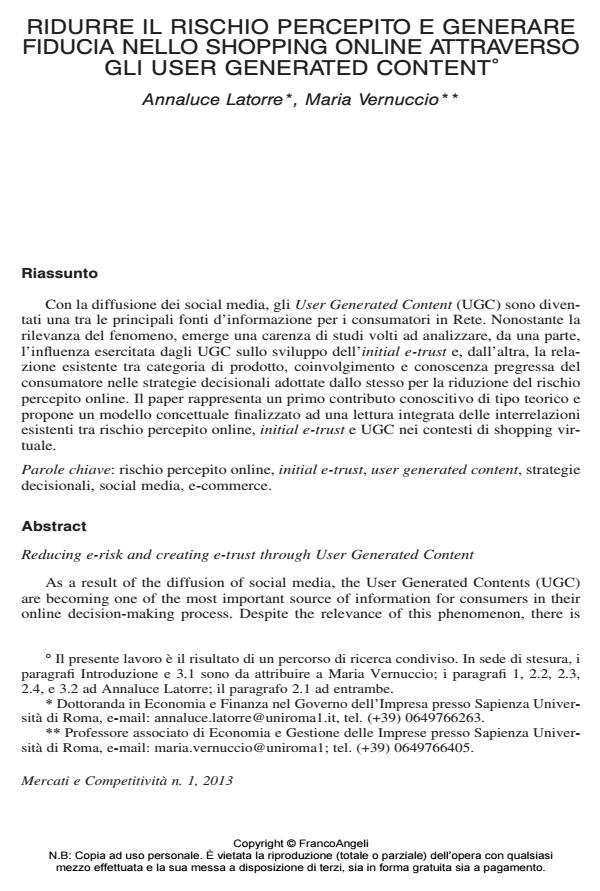Ridurre il rischio percepito e generare fiducia nello shopping online attraverso gli User Generated Content
Titolo Rivista MERCATI E COMPETITIVITÀ
Autori/Curatori Annaluce Latorre, Maria Vernuccio
Anno di pubblicazione 2013 Fascicolo 2013/1
Lingua Italiano Numero pagine 21 P. 143-163 Dimensione file 924 KB
DOI 10.3280/MC2013-001009
Il DOI è il codice a barre della proprietà intellettuale: per saperne di più
clicca qui
Qui sotto puoi vedere in anteprima la prima pagina di questo articolo.
Se questo articolo ti interessa, lo puoi acquistare (e scaricare in formato pdf) seguendo le facili indicazioni per acquistare il download credit. Acquista Download Credits per scaricare questo Articolo in formato PDF

FrancoAngeli è membro della Publishers International Linking Association, Inc (PILA)associazione indipendente e non profit per facilitare (attraverso i servizi tecnologici implementati da CrossRef.org) l’accesso degli studiosi ai contenuti digitali nelle pubblicazioni professionali e scientifiche
Con la diffusione dei social media, gli User Generated Content (UGC) sono diventati una tra le principali fonti d’informazione per i consumatori in Rete. Nonostante la rilevanza del fenomeno, emerge una carenza di studi volti ad analizzare, da una parte, l’influenza esercitata dagli UGC sullo sviluppo dell’initial e-trust e, dall’altra, la relazione esistente tra categoria di prodotto, coinvolgimento e conoscenza pregressa del consumatore nelle strategie decisionali adottate dallo stesso per la riduzione del rischio percepito online. Il paper rappresenta un primo contributo conoscitivo di tipo teorico e propone un modello concettuale finalizzato ad una lettura integrata delle interrelazioni esistenti tra rischio percepito online, initial e-trust e UGC nei contesti di shopping virtuale.
Parole chiave:Rischio percepito online, initial e-trust, user generated content, strategie decisionali, social media, e-commerce
- Social media brand communities and brand value co-creation: Evidences from Italy Riccardo Rialti, Lamberto Zollo, Maria Carmen Laudano, Cristiano Ciappei, in MERCATI & COMPETITIVITÀ 3/2018 pp.111
DOI: 10.3280/MC2018-003007 - L'efficacia delle campagne di social couponing: uno studio tra i merchant di Groupon Fabiio Cassia, Francesca Magno, Marta Ugolini, in MERCATI E COMPETITIVITÀ 3/2014 pp.41
DOI: 10.3280/MC2014-003004 - User-Generated Systems of Signs and Meanings in Product Customization: Taxonomies and Research Directions Maria Antonietta Raimondo, Stefania Farace, Gaetano "Nino" Miceli, in MERCATI & COMPETITIVITÀ 2/2018 pp.61
DOI: 10.3280/MC2018-002004
Annaluce Latorre, Maria Vernuccio, Ridurre il rischio percepito e generare fiducia nello shopping online attraverso gli User Generated Content in "MERCATI E COMPETITIVITÀ" 1/2013, pp 143-163, DOI: 10.3280/MC2013-001009